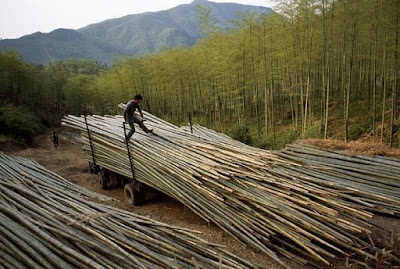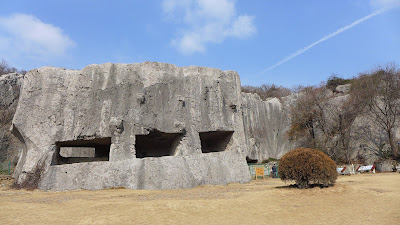In the vast annals of ancient China, natural gas held a place of fascination and practicality. Long before the modern era, the Chinese people harnessed the power of this volatile resource through ingenious methods and remarkable materials, most notably bamboo drills and pipes. This article embarks on a captivating journey through the historical significance of natural gas exploitation in ancient China, unearthing the depths of resourcefulness and ingenuity displayed by its people.
The story begins with the discovery of natural gas, a hidden treasure nestled beneath the surface of the Earth. It was in the southwestern province of Sichuan that Li Bing, a visionary figure of his time, stumbled upon vast reservoirs of natural gas while designing the awe-inspiring Dujiangyan Irrigation system. This revelation marked the genesis of a new era in energy exploration.
In those ancient times, natural gas found its primary application in the province of Sichuan itself. Unlike today, where it fuels a wide range of industrial activities, natural gas served as a vital component of salt production. Sichuan, an arid region once submerged under ancient seas, held rich deposits of both natural gas and brine. It was within this landscape that the Chinese harnessed the potential of natural gas, combining it with their mastery of salt extraction techniques.
The ingenious application of bamboo, a material revered for its exceptional properties, played a pivotal role in the exploitation of natural gas. Bamboo, with its inherent strength, ease of use, and widespread availability, became the cornerstone of Chinese craftsmanship. As a naturally occurring composite material, bamboo possessed qualities that rivaled even modern fibre composites like carbon fiber, fiberglass, and kevlar. The Chinese people harnessed its attributes to fashion drills and pipes, essential tools in the extraction and transportation of natural gas.
The drilling process itself unfolded with meticulous precision. As the Chinese delved deeper into the Earth, they discovered that the salt brine, which they sought to extract, grew increasingly concentrated with depth. Narrow bamboo drill holes, combined with sophisticated percussion drilling techniques, allowed them to access these valuable reserves. By the 1830s, these bamboo drills had penetrated the Earth to unprecedented depths, reaching an astonishing 3,000 feet and earning them the distinction of being the deepest wells in the world.
 |
| Credit: NatGeo |
The significance of natural gas extended beyond its role in salt production. It found its way into the everyday lives of the ancient Chinese. They quickly recognized its flammable nature and began utilizing it for heating purposes and culinary endeavors. Methane lamps, ingeniously crafted by filling leather bladders with gas from wells, provided a reliable source of illumination throughout the day. Such innovative applications showcased the adaptability of the Chinese people, transforming natural gas into a valuable resource that permeated various aspects of their lives.
The exploitation of natural gas in ancient China stands as a testament to the resourcefulness, ingenuity, and technological prowess of its people. From the initial discovery of natural gas in the southwestern province of Sichuan to its multifaceted applications in salt production and everyday life, the Chinese exhibited a remarkable ability to harness the power of this volatile resource.
The utilization of bamboo as a primary material for drilling and transporting natural gas exemplifies the Chinese mastery of craftsmanship. Bamboo, with its inherent strength and abundance, proved to be a perfect match for the demanding requirements of the task at hand. Its qualities as a naturally occurring composite material rival even the modern fibre composites we have today, showcasing the advanced understanding and innovation of the ancient Chinese.
The journey into the depths of the Earth was not without challenges, yet the Chinese overcame them with remarkable skill. They developed intricate drilling techniques, such as percussion drilling, and pushed the boundaries of depth with their bamboo drills, setting world records in the process. The discovery of unsafe gas pockets led to the development of complex refining processes involving carburetors, ensuring the safe utilization of natural gas in various applications.
Beyond its technical achievements, the exploitation of natural gas had profound social and economic implications. The boom in salt production led to migrations and conflicts as Han Chinese settlers flocked to the brine-rich regions, interacting with non-Chinese communities and shaping the region's cultural landscape. The enduring diversity of Sichuan Province today serves as a testament to the complex and fluid history of this period.
The story of natural gas in ancient China unveils a narrative of adaptability and progress, where a seemingly mysterious resource was harnessed to fuel innovation and improve daily life. It stands as a testament to the timeless human quest for understanding and mastery of the world around us.
As we look back at the ancient Chinese achievements in natural gas exploitation, we gain a deeper appreciation for their legacy and contributions to technological advancements. Their pioneering spirit and unwavering commitment to exploration and innovation continue to inspire us today. The remarkable advancements in ancient Chinese technology remind us that even in the distant past, human ingenuity knew no bounds when faced with the challenges and opportunities presented by our natural environment.
Articles you might like:





